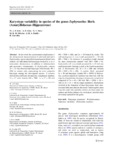Use este identificador para citar ou linkar para este item:
http://www.alice.cnptia.embrapa.br/alice/handle/doc/896456Registro completo de metadados
| Campo DC | Valor | Idioma |
|---|---|---|
| dc.contributor.author | FELIX, W. J. P. | pt_BR |
| dc.contributor.author | FELIX, L. P. | pt_BR |
| dc.contributor.author | MELO, N. F. de | pt_BR |
| dc.contributor.author | OLIVEIRA, M. B. M. | pt_BR |
| dc.contributor.author | DUTILH, J. H. A. | pt_BR |
| dc.contributor.author | CARVALHO, R. | pt_BR |
| dc.date.accessioned | 2011-07-20T11:11:11Z | pt_BR |
| dc.date.accessioned | 2011-07-20T11:11:11Z | pt_BR |
| dc.date.available | 2011-07-20T11:11:11Z | pt_BR |
| dc.date.available | 2011-07-20T11:11:11Z | pt_BR |
| dc.date.created | 2011-07-20 | pt_BR |
| dc.date.issued | 2011 | pt_BR |
| dc.identifier.citation | Plant Systematics and Evolution, New York, v. 294, p. 263-271, 2011. | pt_BR |
| dc.identifier.uri | http://www.alice.cnptia.embrapa.br/alice/handle/doc/896456 | pt_BR |
| dc.description | Abstract In this work, the cytotaxonomic implications of the chromosomal characterization of cultivated and native Zephyranthes species described in northeastern Brazil were studied. All individuals had karyotype formed by a set of metacentric chromosomes, in addition to submetacentric and acrocentric chromosomes. In Zephyranthes robusta, 2n = 12 was observed and karyotype with formula 4M ? 2SM in somatic cells, representing the most symmetric karyotype among the investigated species. Z. sylvatica showed three different chromosome complement numbers: 2n = 12 with formula 1M ? 5SM, 2n = 12 ? 1B with1M ? 5SM ? (1B), and 2n = 18 formed by cracks. The cultivated species Z. rosea Lindl. presented 2n = 24 with 4M ? 7SM ? 1A, however Z. grandiflora Lindl. showed the same chromosome number with 2M ? 5SM ? 5A. Zephyranthes aff. rosea Lindl. presented 2n = 25 with one small metacentric forming a crack in the fourth metacentric pair. Z. brachyandra has 2n = 24 ? (1B) and formula 4M ? 3SM ? 5A ? (1B). Z. candida Herb. presented 2n = 38 and karyotype formula 9M ? 10SM. In Habranthus itaobinus numerical variation was observed, with the majority of populations showing a chromosome complement composed of 2n = 44 ? 1B with 5M ? 12SM ? 5A ? (1B), or 2n = 44 ? 3B in a single population. Mechanisms involved in the formation of these karyotypes from chromosomal imbalance data are discussed. Taken together, data from this study only partially confirm previous counts for epithets and further enhance the cytological variability data previously reported for the genus. | pt_BR |
| dc.language.iso | por | pt_BR |
| dc.rights | openAccess | pt_BR |
| dc.subject | Lirio-da-caatinga | pt_BR |
| dc.subject | Cromossomo | pt_BR |
| dc.subject | Habranthus itaobinus | pt_BR |
| dc.subject | Melhoramento genético | pt_BR |
| dc.subject | Karyotype asymmetry | pt_BR |
| dc.title | Karyotype variability in species of the genus Zephyranthes Herb. (Amaryllidaceae-Hippeastreae). | pt_BR |
| dc.type | Artigo de periódico | pt_BR |
| dc.date.updated | 2011-11-18T11:11:11Z | pt_BR |
| dc.subject.thesagro | Cromossoma | pt_BR |
| dc.subject.nalthesaurus | Zephyranthes | pt_BR |
| dc.subject.nalthesaurus | Chromosomes | pt_BR |
| riaa.ainfo.id | 896456 | pt_BR |
| riaa.ainfo.lastupdate | 2011-11-18 | pt_BR |
| dc.identifier.doi | 10.1007/s00606-011-0467-6 | pt_BR |
| dc.contributor.institution | W. J. P. FELIX, Mestrando da UFRPE; L. P. FELIX, UFPB; NATONIEL FRANKLIN DE MELO, CPATSA; M. B. M. OLIVEIRA, UFPE; J. H. A. DUTILH, UNICAMP; R. CARVALHO, UFRPE. | pt_BR |
| Aparece nas coleções: | Artigo em periódico indexado (CPATSA)  | |
Arquivos associados a este item:
| Arquivo | Descrição | Tamanho | Formato | |
|---|---|---|---|---|
| Natoniel2011.pdf | 410,72 kB | Adobe PDF |  Visualizar/Abrir |









